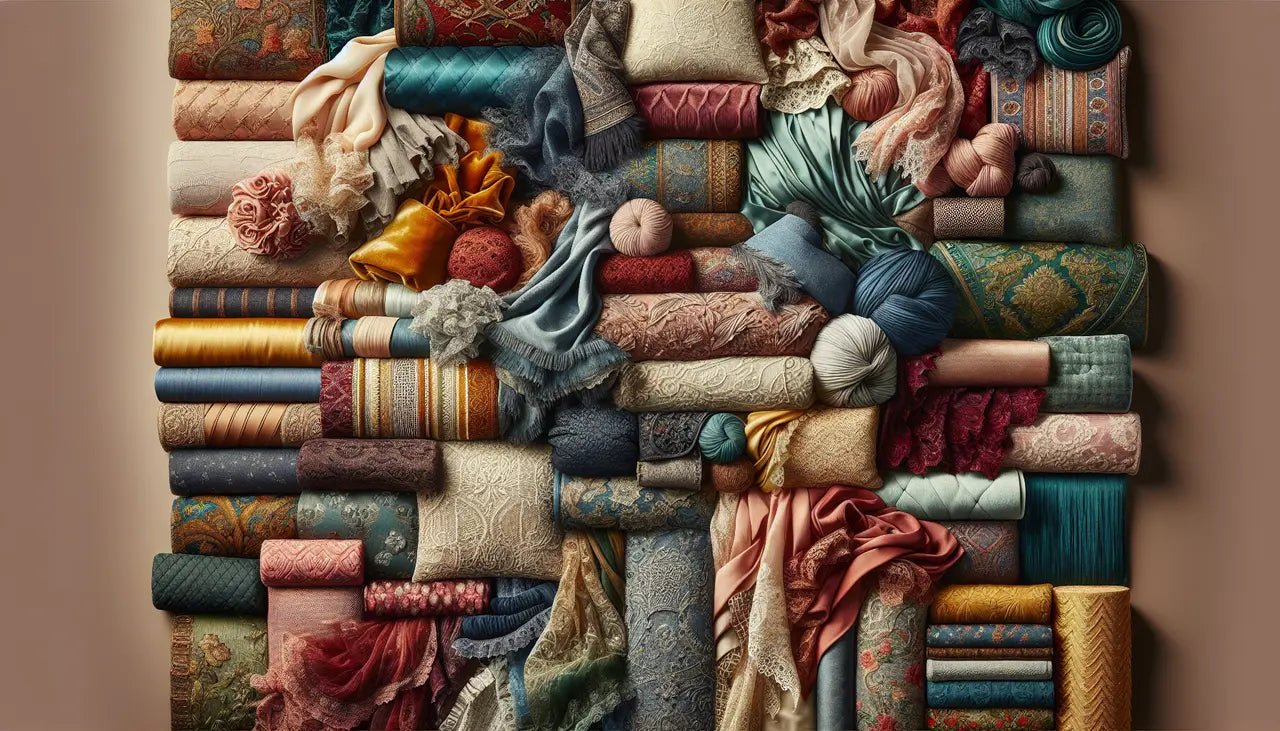Introduction to Sustainable Linen Upholstery Fabric
Sustainable linen upholstery fabric is not just any material you pick for your chairs and sofas. It's the eco-friendly warrior in the world of fabrics. Linen comes from the flax plant, which doesn't need much water or pesticides to grow. That's a big win for our planet. Plus, every part of the flax plant is used, so there's no waste. When you choose linen for your upholstery, you're not just making your home look good. You're making a choice that supports the environment. Linen is strong, naturally moth resistant, and gets softer with each wash. It's also biodegradable, meaning it won't sit in a landfill for centuries. So, when you decide to freshen up your space with some new fabric, think about sustainable linen. It's good for your home and gentle on the earth.
The Environmental Benefits of Choosing Linen Upholstery Fabric
Choosing linen for your upholstery fabric is more than just picking a texture; it's about making a difference for our planet. Linen comes from the flax plant, which is kinda awesome because it doesn’t need much to grow. Less water? Check. No need for pesticides? You got it. This makes linen a top-notch choice for folks looking to reduce their environmental footprint. Once your linen upholstery has lived a long life, it doesn’t stick around for centuries in a landfill. It's biodegradable, breaking down without leaving harmful residues behind. Plus, it's recyclable, meaning your old linen can have a new life in another form. This cycle minimizes waste, making linen an ally in combating unnecessary trash. By picking linen, you're not just doing your home a favor—you're throwing a high-five to Mother Nature.

How Linen Upholstery Fabric Contributes to a Healthier Home
Linen upholstery fabric isn't just about looks; it's also about health. Made from the flax plant, it's natural and comes with a bunch of benefits for your home. First off, linen is tough against dust mites and bacteria, making it a smart choice for allergy sufferers. It's also a breathable material, which means it can absorb moisture without becoming damp or musty. This helps in keeping your home's air fresher and cleaner. Another plus is that linen is biodegradable. When it's time for a change, your old linen upholstery won't stick around in a landfill for ages. And don't forget – linen gets softer and comfier with each wash. So, not only does it contribute to a healthier home, but it also gets better with age. Choosing linen for your upholstery is a win-win.
Transforming Spaces: Before and After with Linen Upholstery
Before diving into the world of linen upholstery, let's set the scene. Picture your living space now - the same old sofa, those armchairs you've had for years, maybe a bit worn or out of style. It's comfortable, sure, but does it spark joy? Does it reflect a sustainable lifestyle you're aiming for? Now, imagine transforming those pieces with linen upholstery fabric. The before and after of this makeover could be staggering.
Linen, known for its durability and comfort, also brings an eco-friendly vibe to any room. By choosing linen, you're not just updating the look of your furniture; you're making a conscious choice for sustainability. After the transformation, your space doesn't just look refreshed; it feels different. The texture of linen, with its natural, breathable qualities, invites comfort and relaxation. The aesthetic shift towards a more organic and earthy feel can significantly impact the overall ambiance of your home.
In the after scenario, your living space becomes a testament to eco-conscious living. It showcases a commitment to not just style but also environmental responsibility. Linen’s timeless quality ensures your furniture won’t look dated anytime soon, further reducing the need for frequent updates. This transformation, therefore, isn’t just about a visual upgrade but about aligning your living space with your values. By choosing sustainable linen, you breathe new life into your home, making it a place of comfort, style, and sustainability.

The Durability and Longevity of Linen Upholstery Fabric
Linen upholstery fabric is a solid choice for anyone looking to combine sustainability with durability in their home. This natural fabric is known for its strength and long-lasting qualities, outperforming many synthetic alternatives. Linen can endure a lot of wear and tear, making it perfect for furniture that sees daily use. Its resistance to pilling and abrasion means it maintains its good looks over time, too. Plus, linen becomes softer and more comfortable with each wash without losing its integrity. This is why choosing linen for your upholstery projects is not just about aesthetics; it's a practical decision for a home that values longevity and sustainability. Remember, investing in linen could save you from frequent replacements, keeping your space stylish and comfortable for years.
Caring for Your Linen Upholstery to Maximize Sustainability
Linen is a tough cookie, but it loves a gentle touch. Keep it real by avoiding harsh chemicals. A simple mix of mild soap and water does the trick for most spills. For those stubborn spots, a bit of baking soda and water can work wonders. Linen's a bit like us – it doesn't like too much sunbathing. Keep it out of direct sunlight to avoid fading. This fabric also has a knack for wrinkling. To keep it looking sharp, use a steam iron on a low setting. When it comes to drying, lay it flat or hang it up. Tossing it in the dryer is a no-go if you want it to last. Regular, gentle care not only keeps your linen upholstery looking fresh, it also stretches its lifespan, making it a champ of sustainability in your home.
Comparing Linen with Other Sustainable Upholstery Materials
When you're diving into the world of sustainable upholstery materials, linen stands out for a few reasons, but how does it stack up against other eco-friendly choices? Linen, made from the flax plant, is loved for its natural, breathable, and highly durable qualities. It's a champ at staying cool in hot weather and warms up nicely when it’s chilly, making it a great all-season fabric for your home. Compared to cotton, another popular sustainable option, linen is stronger and lasts longer, plus it uses less water and pesticides to grow. But linen isn't the only game in town.
Bamboo fabric is a rival, known for being soft and having antibacterial properties. However, converting bamboo into fabric often requires heavy chemical use, which can question its green status. Then there’s hemp, which, like linen, boasts incredible durability and minimal water needs during cultivation. Its texture, though, can be a bit rougher than linen, making linen the go-to for that soft, inviting feel.
So, why pick linen over others? It’s simple: linen brings that unbeatable combo of durability, comfort, and sustainability. It gets softer with each wash and wear, entertaining your home with both elegance and eco-friendliness. Sure, options like bamboo and hemp have their merits, but for that timeless look and feel that only gets better with time, linen is in a league of its own. Plus, it’s kinder to our planet. Linen's not just fabric; it's a statement in sustainability.
Styling Your Home with Linen Upholstery Fabric
Linen upholstery fabric brings a fresh, natural look to your home. It’s durable, easy to care for, and gets softer with each wash. Start by choosing lighter shades like beige or soft gray for a minimalist style or go bold with deep blues or greens for a statement piece. Mix textures by pairing linen with velvet cushions or wool throws. This adds depth and interest to your space. Remember, linen blends well with wooden furniture and metal accents, creating a timeless design. When styling with linen, keep it simple. The fabric's natural beauty shines in simple, clean designs. Whether you’re reupholstering a vintage chair or buying new linen curtains, this fabric can transform any room into a cozy, stylish space.
Where to Find Sustainable Linen Upholstery Fabrics
Looking for sustainable linen upholstery fabrics isn't as hard as it might seem. Start your hunt in local fabric stores; many are now focusing on eco-friendly options due to rising demand. Don’t overlook online shops. They often offer a wider variety because they cater to a global audience. Websites like Etsy or specialized eco-friendly fabric retailers are gold mines for these materials. Pay attention to certifications. Fabrics certified as organic or eco-friendly by reputable organizations guarantee that your linen is truly sustainable. Also, dive into social media platforms. Instagram and Pinterest are bursting with small businesses promoting sustainable fabrics. Lastly, consider asking for recommendations in online forums or community groups dedicated to sustainable living. These folks are often more than happy to share their finds. Remember, choosing sustainable linen is not only about the fabric itself but where and how you source it.
Conclusion: Making the Sustainable Choice with Linen Upholstery
Choosing sustainable linen upholstery fabric is more than just a trendy decision; it's a smart move for both the planet and your home. Linen is a durable, natural material that not only adds a touch of elegance but also promotes a healthier environment. By selecting linen, you're opting for a fabric that is less taxing on our planet’s resources, as it is made from flax plants which require less water and chemicals to grow. It's a choice that speaks volumes about your commitment to sustainability and your desire for quality. Remember, every piece of furniture you decide to cover with linen is a step towards a greener home. So, make the sustainable choice with linen upholstery. It’s good for the Earth, good for your home, and it never goes out of style.



